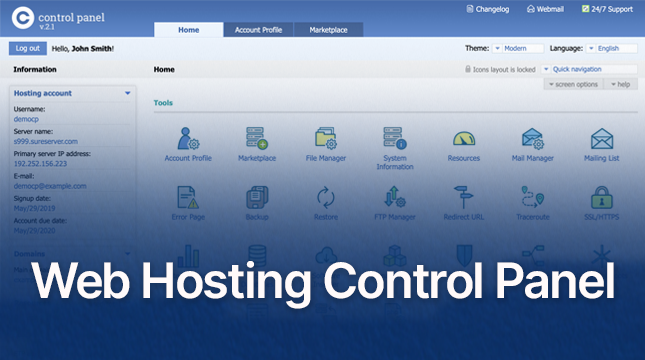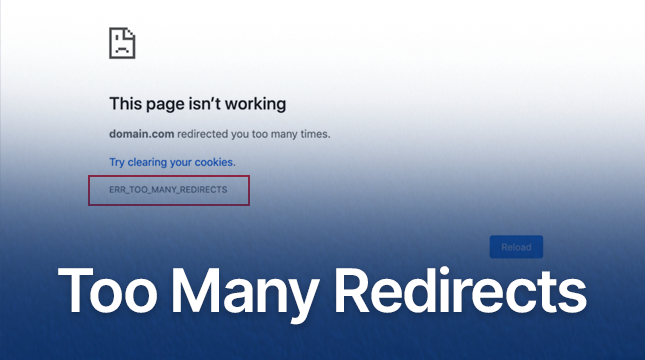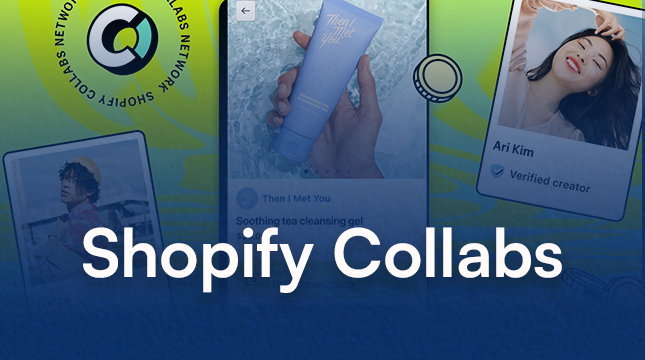This website uses cookies so that we can provide you with the best user experience possible. Cookie information is stored in your browser and performs functions such as recognising you when you return to our website and helping our team to understand which sections of the website you find most interesting and useful.
Top Web Hosting Control Panels for Beginners and Experts

Navigating the world of web hosting can be complex, especially when it comes to managing your website efficiently. One of the key tools at your disposal is the web hosting control panel, a powerful interface that allows you to take charge of various aspects of your website. From managing domains and email accounts to overseeing databases and security settings, a good control panel can make all the difference in your hosting experience.
Are you looking for a hosting service that offers an intuitive control panel? Check out this top-rated hosting provider that makes managing your website a breeze, whether you’re a beginner or a seasoned pro.
Types of Web Hosting Control Panels
There are several web hosting control panels available, each with its own set of features and user interfaces. Here are some of the most popular ones:
-
cPanel
- Overview: cPanel is one of the most widely used control panels in the web hosting industry. It’s known for its user-friendly interface and robust set of features.
- Features: Domain management, email management, file management, database management (MySQL), security tools (SSL, IP blocking), and more.
- Best For: Beginners and experienced users alike, due to its intuitive design and extensive documentation.
-
Plesk
- Overview: Plesk is another popular control panel that supports both Linux and Windows servers. It’s particularly favored for its flexibility and support for multiple operating systems.
- Features: Similar to cPanel, Plesk offers domain management, email management, database management, and security features. It also has a WordPress Toolkit for easy WordPress management.
- Best For: Users who need to manage multiple servers or those who prefer Windows-based hosting.
-
DirectAdmin
- Overview: DirectAdmin is known for being lightweight and efficient, making it a great choice for users who want a fast control panel without unnecessary features.
- Features: Core features include domain management, email management, file management, and security tools. It’s less feature-rich than cPanel or Plesk but more than adequate for most users.
- Best For: Users who want a simple, no-frills control panel that’s easy to navigate.
-
Webmin
- Overview: Webmin is a free, open-source control panel that offers a high level of customization. It’s primarily used by advanced users who are comfortable working with Unix/Linux systems.
- Features: Webmin allows for in-depth server management, including user account management, disk quotas, package management, and more.
- Best For: Advanced users who need a customizable and powerful control panel.
-
ISPConfig
- Overview: ISPConfig is a free, open-source control panel that supports multiple servers. It’s a good choice for users who need to manage a large number of websites or servers from a single interface.
- Features: Domain management, email management, database management, FTP management, and more.
- Best For: Advanced users and web hosting resellers who manage multiple servers.
-
VestaCP
- Overview: VestaCP is a free control panel known for its simplicity and speed. It provides a clean interface and all the essential features needed for web hosting management.
- Features: Domain management, email management, database management, file management, and basic security features.
- Best For: Users who want a free, easy-to-use control panel with the essential features.
Features to Look for in a Web Hosting Control Panel
When choosing a web hosting control panel, it’s important to consider the features that are most important to you. Here are some key features to look for:
- User-Friendly Interface: The control panel should be easy to navigate, with clear labels and intuitive controls.
- Domain Management: The ability to manage multiple domains, subdomains, and DNS settings is crucial.
- Email Management: Look for features like email account creation, forwarding, and spam filtering.
- File Management: Features like a file manager, FTP access, and backup tools are essential for managing your website’s files.
- Database Management: The control panel should support database creation and management, typically with MySQL or MariaDB.
- Security Features: SSL certificate management, IP blocking, and firewall configuration are important for keeping your site secure.
- Resource Monitoring: The ability to monitor server resources like CPU usage, disk space, and bandwidth is valuable for maintaining your site’s performance.
How to Access Your Web Hosting Control Panel
Accessing your web hosting control panel is usually a straightforward process:
- Login Through Your Hosting Provider: Most hosting providers offer a direct link to your control panel from their main dashboard. After logging into your hosting account, look for an option like “Manage Hosting” or “Control Panel.”
- Use a Direct URL: You can often access your control panel directly by typing a specific URL into your browser. For example, for cPanel, you might use
https://yourdomain.com/cpanelorhttps://yourdomain.com:2083. The exact URL will vary depending on your hosting provider. - Enter Your Credentials: Once you reach the login page, enter your username and password provided by your hosting provider. If you’ve forgotten your login details, most providers offer a password reset option.
- Explore the Interface: After logging in, you’ll see the control panel’s main dashboard, where you can start managing your website, domains, email accounts, and other settings.
FAQs About Web Hosting Control Panels
1. Which web hosting control panel is the best for beginners?
For beginners, cPanel is often considered the best option due to its user-friendly interface and comprehensive features. It’s widely supported by hosting providers and has extensive documentation and tutorials available online.
2. How do I access my web hosting control panel?
You can access your web hosting control panel through your hosting provider’s dashboard or by using a direct URL like https://yourdomain.com/cpanel. Enter your login credentials to access the panel and start managing your hosting services.
3. Can I change my web hosting control panel?
Changing your web hosting control panel is possible, but it can be complex. Some hosting providers allow you to switch panels, while others may require you to migrate to a different hosting plan or provider. It’s important to back up your data before making any changes.
4. What should I do if I forget my control panel login details?
If you forget your login details, you can usually reset your password through your hosting provider’s main dashboard. Look for an option like “Forgot Password” on the control panel login page, or contact your hosting provider’s support team for assistance.
5. How can I secure my web hosting control panel?
Securing your control panel involves several steps:
- Use a strong, unique password.
- Enable two-factor authentication (2FA) if available.
- Regularly update your software and control panel to the latest version.
- Limit access to trusted IP addresses using IP blocking features.
6. What is the difference between cPanel and Plesk?
cPanel and Plesk are both popular control panels, but they have some differences. cPanel is typically associated with Linux hosting, while Plesk supports both Linux and Windows hosting. Plesk also has a more modern interface and includes a WordPress Toolkit, which is useful for managing WordPress sites.
7. Do I need to pay for a web hosting control panel?
Some control panels, like cPanel and Plesk, require a paid license, which is often included in your hosting plan. Others, like Webmin, ISPConfig, and VestaCP, are free to use but may have fewer features or require more technical knowledge to set up.
8. How do I back up my website using a control panel?
Most control panels have a backup feature that allows you to create a full backup of your website, including files, databases, and email accounts. In cPanel, for example, you can use the “Backup” tool to generate and download a backup file. It’s recommended to back up your site regularly to prevent data loss.
9. Can I manage multiple websites from one control panel?
Yes, most web hosting control panels allow you to manage multiple websites (domains) from a single interface. You can add new domains, create subdomains, and manage all associated resources like email accounts and databases.
10. What are the limitations of using a web hosting control panel?
While web hosting control panels simplify many tasks, they may have limitations depending on the hosting plan and control panel used. Some advanced configurations may require manual editing of server files, and certain features might be restricted by your hosting provider.
Conclusion
A web hosting control panel is an essential tool for managing your website efficiently, whether you’re a beginner or an experienced webmaster. By understanding the different types of control panels, their features, and how to access and use them, you can take full control of your hosting environment and ensure your website runs smoothly. With the information provided in this guide, you’re well-equipped to choose the best control panel for your needs and navigate it with confidence.

Let's Start Your Project
Get free consultation for your digital product idea to turn it into reality!
Get Started






